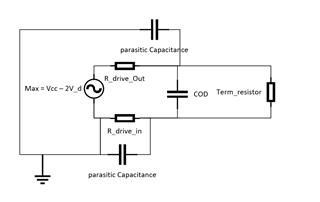Hi,
Good Day.
In regards to the datasheet of SN65HVD178x, the customer would like to extract the COD parameter.
Could you give us some details about the methodology to perform measurement of this parameter?
Please advise. Thank you very much.
Best Regards,
Ray Vincent


